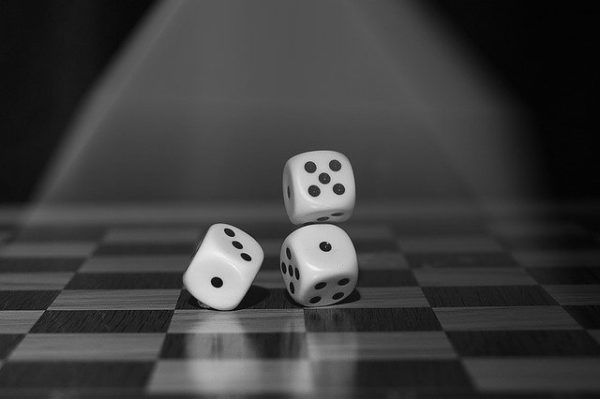LANGUAGE TRAINING CENTRE - GERMAN | ENGLISH | FRENCH | CHINESE | SPANISH | SWAHILI | KENYA SIGN LANG

Title: LANGUAGE TRAINING CENTRE - GERMAN | ENGLISH | FRENCH | CHINESE | SPANISH | SWAHILI | KENYA SIGN LANG
How to Count in German

Learn to Count With German Numbers
If you’re a native English speaker, learning German will be relatively easy to do. And you’ll see this when you’re learning German numbers. Learning how to count in German won’t be difficult, because the numbers will look very familiar. But, there are a few differences in the construction of numbers. Here’s everything you need to know about German numbers, so you can count to 100 or above easily.
German Numbers 1-10
| Numeral | German number |
| 0 | null |
| 1 | eins |
| 2 | zwei |
| 3 | drei |
| 4 | vier |
| 5 | fünf |
| 6 | sechs |
| 7 | sieben |
| 8 | acht |
| 9 | neun |
| 10 | zehn |
As you can see, quite a few numbers in German look or sound similar to English numbers. “Vier†is very close to “fourâ€, and there’s almost no difference between “neun†and “nine†in pronunciation. Knowing how to count to 10 in German is very important to master. You’ll hear these numbers often, and you’ll see them again when you’re counting higher numbers.

Counting From 10 to 20 in German
| Numeral | German number |
| 10 | zehn |
| 11 | elf |
| 12 | zwölf |
| 13 | dreizehn |
| 14 | vierzehn |
| 15 | fünfzehn |
| 16 | sechzehn |
| 17 | siebzehn |
| 18 | achtzehn |
| 19 | neunzehn |
| 20 | zwanzig |
Numbers 10-20 in German are very similar, if not even easier than in English. After ten, eleven, and twelve are unique. But from 13 onwards, you can discover a pattern. Much like the “teens†in English numbers, you construct German numbers 13-19 by adding “zehn†after the numbers. And since “zehn†means ten, it’s even more straightforward than the English “teenâ€.
The only two exceptions are 16 and 17 in German. The “s†and the “en†disappear from “sechs†and “sieben†respectively.
Constructing German Numbers to 100
After 20, there’s a slight change in the logic of numbers in German. Here’s how you can count in German from 20 to 100:
| Numeral | German number |
| 20 | zwanzig |
| 21 | einundzwanzig |
| 22 | zweiundzwanzig |
| 23 | dreiundzwanzig |
| 24 | vierundzwanzig |
| 25 | fünfundzwanzig |
| 26 | sechsundzwanzig |
| 27 | siebenundzwanzig |
| 28 | achtundzwanzig |
| 29 | neunundzwanzig |
| 30 | dreißig |
Numbers 21-29 you need to construct in German. While the logic is easy to understand, you’ll need a bit of time to get used to it. If you look at 26 for example, you can see how you put it together: sechs-und-zwanzig. Literally 6 and 20. Unlike 26, where the tens come first and the ones come after, German switches it around.
You start with the ones, then add the tens, adding “und†(and) in between. No hyphens or spaces either. Just all in one word. By this logic, the following numbers look like this:
- 33 – dreiunddreißig
- 84 – vierundachtzig
- 75 – fünfundsiebzig
Tens in German Numbers
To make sure you can count from 1 to 100 in German easily, here are all the tens in the German number system:
| Numeral | German number |
| 10 | zehn |
| 20 | zwanzig |
| 30 | dreißig |
| 40 | vierzig |
| 50 | fünfzig |
| 60 | sechzig |
| 70 | siebzig |
| 80 | achtzig |
| 90 | neunzig |
| 100 | hundert |
Count to a Million in German
Well, we’re not going to show you every single German number until a million. But, we’ll show you how you can say any number even above 100.
| Numeral | German number |
| 100 | einhundert |
| 200 | zweihundert |
| 300 | dreihundert |
| 1,000 | tausend |
| 2,000 | zweitausend |
| 3,000 | dreitausend |
| 1,000,000 | million |
| 1,000,000,000 | milliarde |
| 1,000,000,000,000 | billion |
| 45,738 | fünfundvierzigtausendsiebenhundertachtunddreißig (5+40,000 700 8+30) |
| 2020 | zweitausendzwanzig |
For the big numbers after 100, you say them just like you would in English. First, you need to look at the first number. You say that, and you add one of the following endings depending on how many zeros are behind it:
- hundert – hundred
- tausend – thousand
- hunderttausend – hundred thousand
- million – million
The only thing you have to keep in mind is “45†for example stays the same: 5+40. So, if you want to say 45,000, you need to say (5+40,000).

German Ordinal Numbers
Now you know every German cardinal number. But how do you count in German with ordinal numbers? These are the numbers for ranking and putting things in order.
| Ordinal numbers | German number |
| 1st | erster |
| 2nd | zweiter |
| 3rd | dreiter |
| 4th | viertel |
| 5th | fünfter |
| 6th | sechster |
| 7th | siebter |
| 8th | achter |
| 9th | neunter |
| 10th | zehnter |
| 20th | zwantigster |
| 30th | dreißigster |
| 40th | vierzigster |
| 50th | fünfzigster |
| 60th | sechzigster |
| 70th | siebzigster |
| 80th | achtzigster |
| 90th | neunzigster |
| 100th | hunderster |
To form other cardinal numbers, you simply need to add “-(s)ter†to the end of the number.
- 11th: elfter
- 24th: vierundzwanzigster
- 45th: fünfundvierzigster
- 99th: neunundneunzigster

